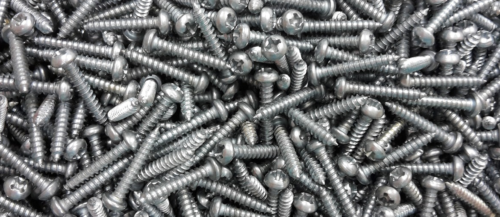BS Fixings has just completed their regular review of commodity prices and it is now clear that stainless steel prices are continuing to rise as global demand for steel and other commodities strengthens. As economies look to bounce back after recent international lockdowns, supply chains are under pressure, and uncertainty over global trade deals continues to influence the prospect of supply and the inclusion of international trade tariffs.
There has been a huge increase in global demand for stainless steel. This growth in demand has been driven initially by the needs of Asian countries but is now growing all over the world. Growing demand without a comparable growth in supply inevitably results in lower availability, causing companies to stock up and further reduce availability, resulting in rising prices. Freight shortages, caused in part by Brexit and the COVID-19 pandemic, has led to the cost of moving both raw materials and finished products to rise. Recent news articles stated prices rising from £1,000 a container to £17,000 a container to move goods from China within a matter of months. This extra cost has been added on to the cost of consumer goods as well as the basic price of such raw materials and commodities.
From a high at the beginning of September 2019, prices started a sustained decline until reaching a low point at the end of March 2020. Since the beginning of April 2020 however, prices have now been on a steady climb for nearly 12 months, with prices reaching a high at the end of February 2021. This trend looks set to continue throughout Q1 and into Q2 of 2021.
Nickel prices play a large role in stainless steel prices and the rise and fall in steel prices often tracks that of Nickel. Whilst the bulk of stainless steel is made from iron, which compared to other metals is relatively cheap, nickel makes up approximately eight to ten percent of the weight of stainless steel. Being significantly more expensive, Nickel has a greater impact on the price of stainless steel than would be expected when simply looking at the amount used in the manufacture of stainless steel. The current high value of nickel as traded on the LME was almost $19,722 per tonne on the 22nd of February 2021 and has been one of the most significant factors in the ongoing rise in stainless steel prices.
Nickel is also used in the manufacture of other products which are currently booming, including the production of batteries for electric cars and other vehicles, which is further putting pressure on demand, hence the prices. A recent report from Roskill, prepared on behalf of the European Commission, revealed that the demand from nickel from the electric vehicle sector is expected to be 2.6 million tonnes by 2040, a huge increase from the 92,000 tonnes used in 2020. The report concluded that: "automotive electrification is expected to represent the single-largest growth sector for nickel demand over the next twenty years."
The rise in the cost of nickel will have more of an impact that many of us might think and will affect the prices of many products not associated with the global commodities market- such as the humble stainless steel screw!





